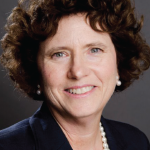Q: How has technology changed interacting with students?
A: As a graduate student, I was used to going to seminars where speakers would present using transparencies. I remember one time a guy came from a math department and used chalk on the chalkboard, and we were like, “How old-school is that?” But these days, transparencies are long since gone. Everybody’s using PowerPoint to teach. In terms of connecting with the students, still being up there on your feet in front of the class is very important. It’s really the eye contact and talking directly with them that gets the ideas across the most.

ARHP Distinguished Scholar Award
Brett Thombs, PhD
William Dawson Scholar and Associate Professor, Faculty of Medicine, McGill University and Senior Investigator, Lady Davis Institute for Medical Research, Jewish General Hospital, Montreal
Background: Dr. Thombs graduated from Northwestern University in Evanston, Ill., in 1989 with a bachelor’s degree, obtained a master’s degree in special education from the University of Arizona in 1996, and completed his doctorate in clinical psychology at Fordham University in the Bronx, N.Y., in 2004. He completed his postdoctoral fellowship at the Johns Hopkins University School of Medicine in Baltimore two years later.
He’s published more than 140 peer-reviewed articles focused on depression screening, research methodology, and the psychosomatic aspects of living with scleroderma. But the bulk of his time is now spent directing the Scleroderma Patient Intervention Network, or SPIN, a collaboration of more than 40 investigators from centers in the U.S., Canada, Mexico, and five European countries. Funded by a Team Grant from the Canadian Institutes of Health Research and utilizing novel trial methods, SPIN is developing a large cohort of multinational patients to conduct psychosocial and rehabilitation intervention trials in a “rare disease context.”
“For example, one project team is building an intervention toolkit to work with body image and appearance issues that come with this disease,” he says. “Eventually, the programs will come together and we will test them in large-scale trials.”
The long-term goal is to provide patients free online toolkits similar to interventions and resources available to patients with more common conditions, such as arthritis.
“It’s a real challenge. No one has ever run large-scale trials like this with psychosocial and rehabilitation interventions in any rare disease,” he says. “I think we are going to be able to continually develop and test a variety of intervention resources that are going to help people cope with the disease.”



